- (Topic 3)
A technician is monitoring a network interface and notices the device is dropping packets. The cable and interfaces, however, are in working order. Which of the following is MOST likely the cause?
Correct Answer:
C
- (Topic 3)
Which of the following requires network devices to be managed ustng a different set of IP addresses?
Correct Answer:
D
Out of band management is a process for accessing and managing network devices and infrastructure at remote locations through a separate management plane from the production network. Out of band management requires network devices to be managed using a different set of IP addresses than the ones used for in-band management or data traffic. This provides a secure and dedicated alternate access method to administer connected devices and IT assets without using the corporate LAN.
SIMULATION - (Topic 3)
SIMULATION
A network technician replaced a switch and needs to reconfigure it to allow the connected devices to connect to the correct networks.
INSTRUCTIONS
Click on the appropriate port(s) on Switch 1 and Switch 3 to verify or reconfigure the correct settings:
• Ensure each device accesses only its correctly associated network
• Disable all unused switch ports
• Require fault-tolerant connections between the switches
• Only make necessary changes to complete the above requirements
If at any time you would like to bring back the initial state of the simulation, please click the Reset All button.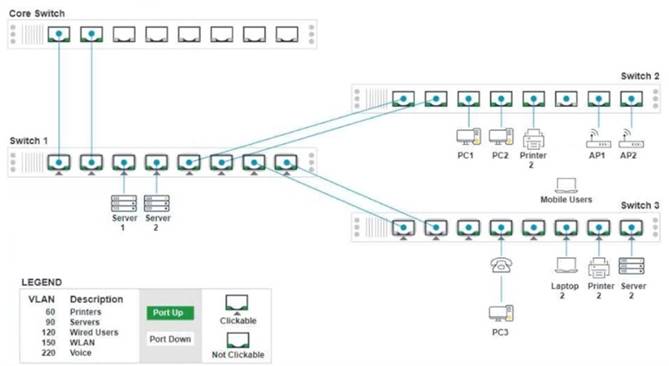
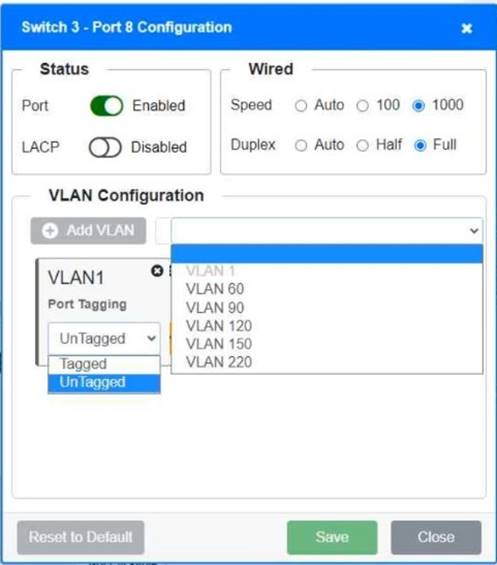
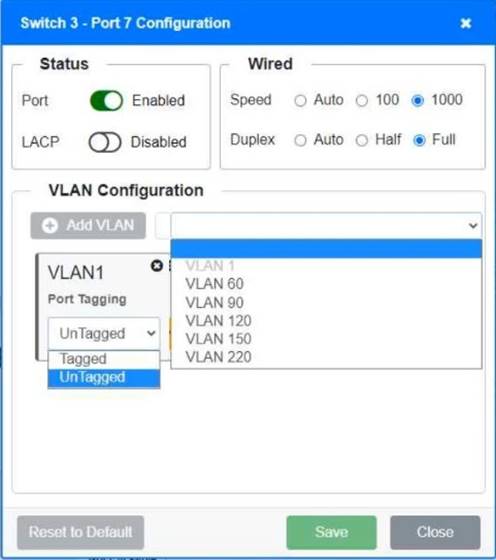

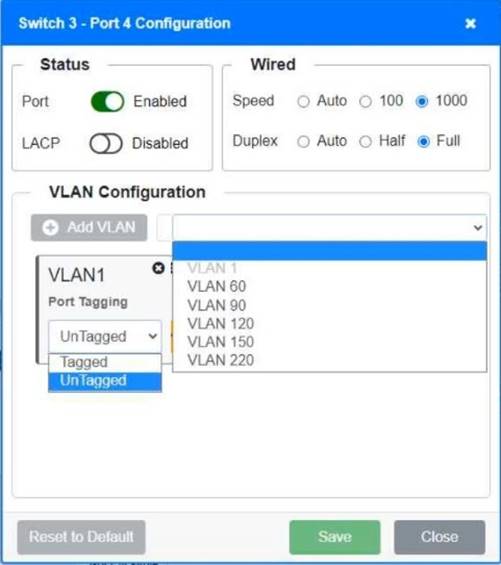
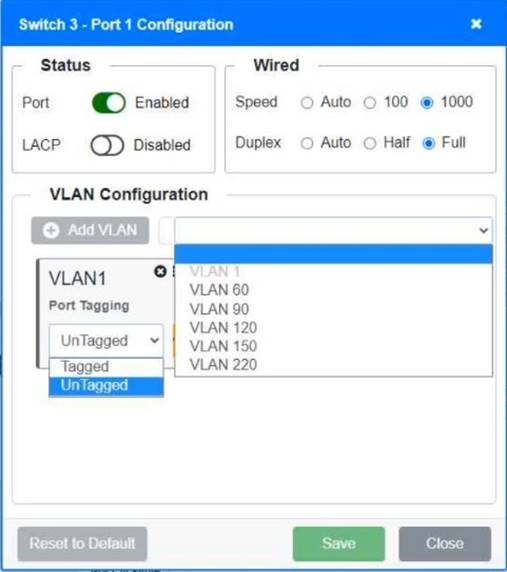

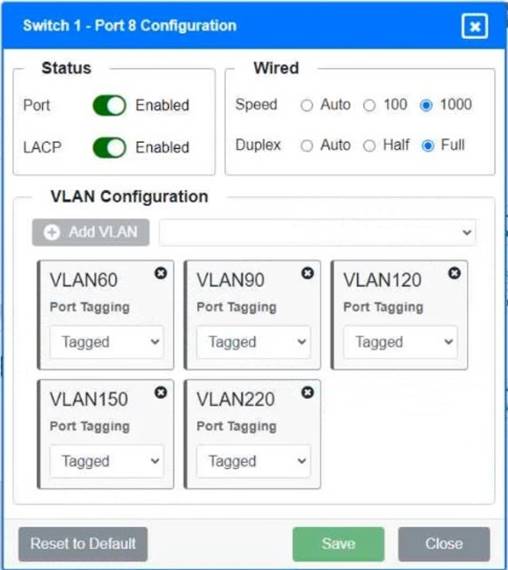
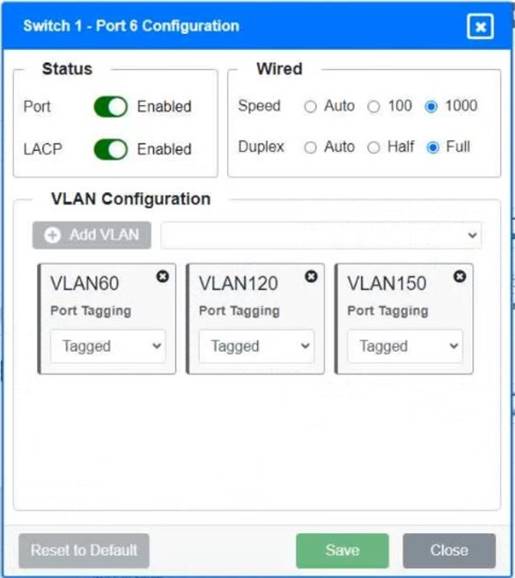
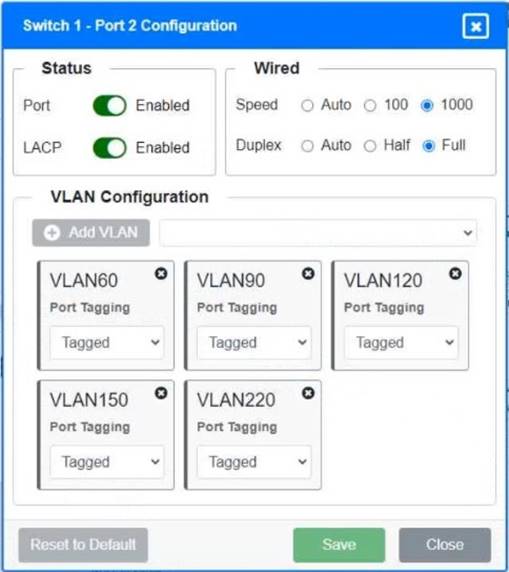
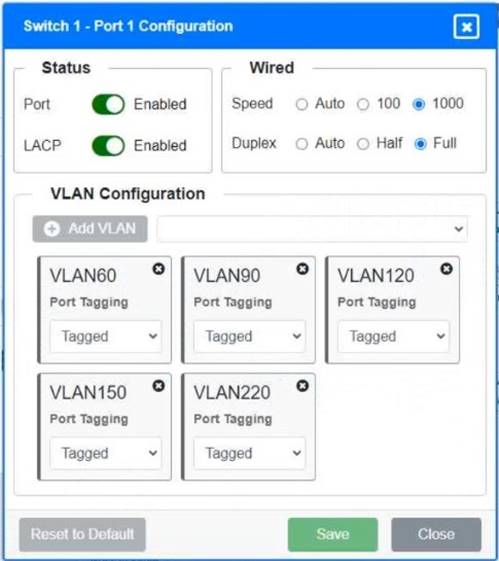
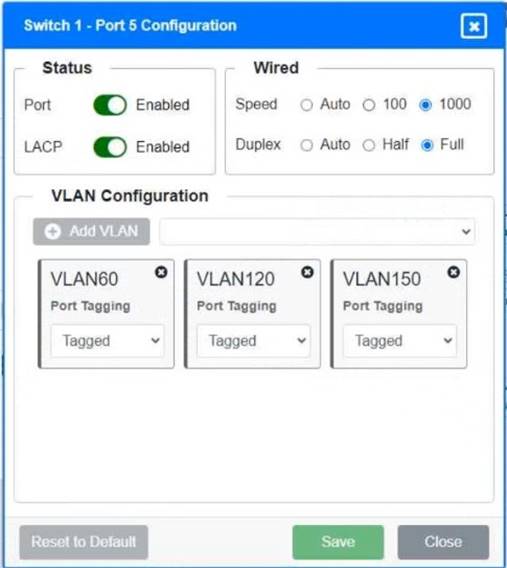
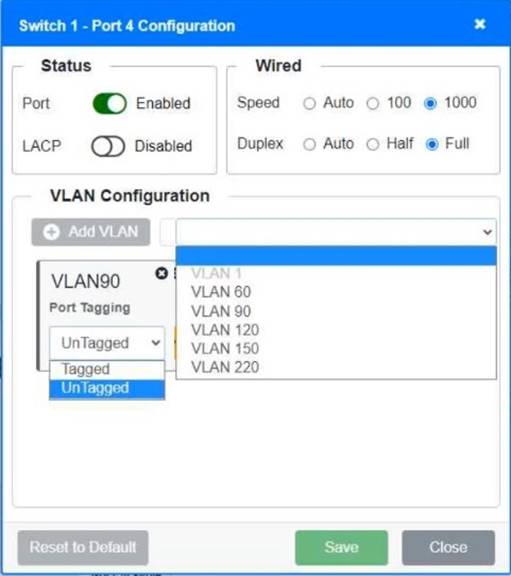
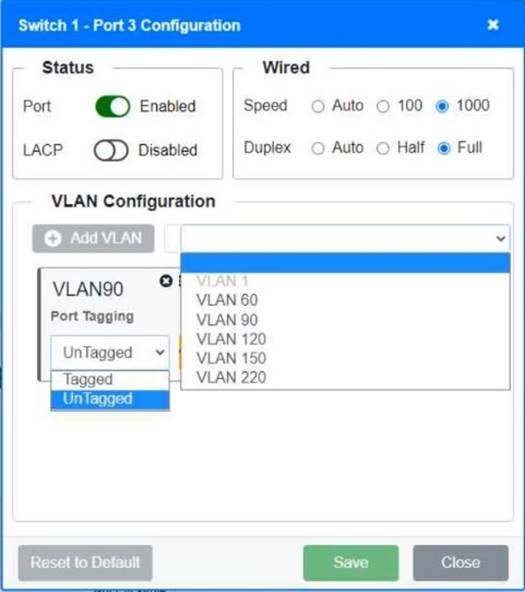
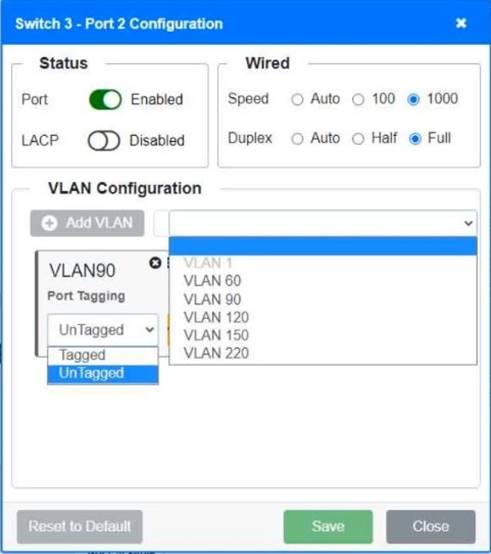
Solution:
Switch 1 and Switch 2 is the only two switches that can be configured. Only switches linked together with there switch ports needs to be "tagged" and "LACP" needs to be enabled. The other ports must be untagged with no LACP enabled. You only need to assign the correct vlan via each port. 'Speed and Duplex' needs to be Speed=1000 and Duplex=Full, with is by default.
https://resources.infosecinstitute.com/topic/what-are-tagged-and-untagged-ports/
Does this meet the goal?
Correct Answer:
A
- (Topic 2)
A user reports a weak signal when walking 20ft (61 m) away from the WAP in one direction, but a strong signal when walking 20ft in the opposite direction The technician has reviewed the configuration and confirmed the channel type is correct There is no jitter or latency on the connection Which of the following would be the MOST likely cause of the issue?
Correct Answer:
A
The antenna type affects the signal strength and coverage of a WAP. Different types of antennas have different radiation patterns and gain, which determine how far and wide the signal can reach. If the user experiences a weak signal in one direction but a strong signal in the opposite direction, it could mean that the antenna type is not suitable for the desired coverage area. The technician should consider changing the antenna type to one that has a more balanced or directional radiation pattern. References: https://community.cisco.com/t5/wireless-small-business/wap200-poor-signal-strength/td- p/1565796
- (Topic 3)
A technician is expanding a wireless network and adding new access points. The company requires that each access point broadcast the same SSID. Which of the following should the technician implement for this requirement?
Correct Answer:
D
An extended service set (ESS) is a wireless network that consists of two or more access points (APs) that share the same SSID and are connected by a distribution system, such as a switch or a router. An ESS allows wireless clients to roam seamlessly between different APs without losing connectivity or changing network settings. An ESS can also increase the coverage area and capacity of a wireless network